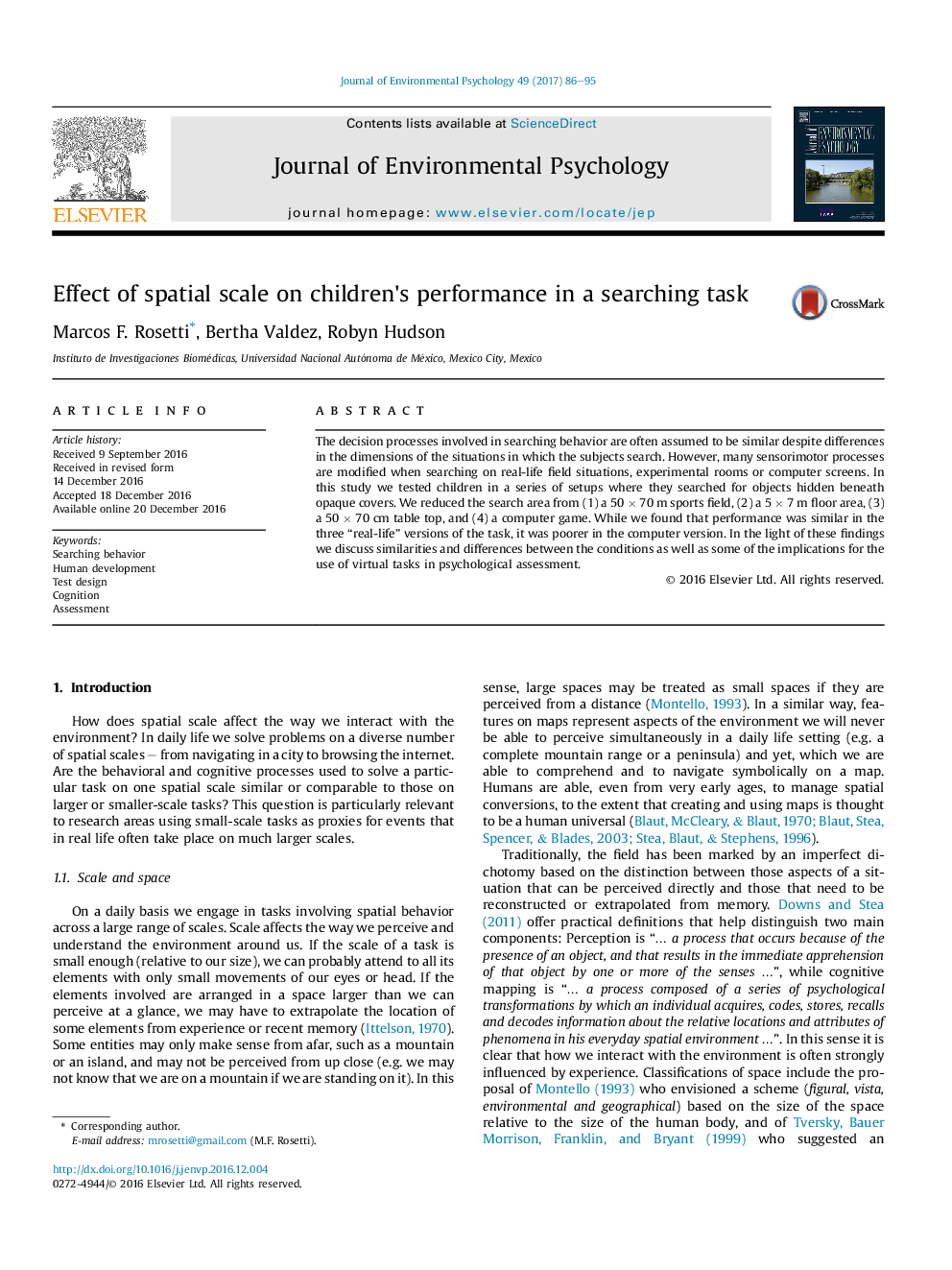| Article ID | Journal | Published Year | Pages | File Type |
|---|---|---|---|---|
| 5034948 | Journal of Environmental Psychology | 2017 | 10 Pages |
â¢We tested the searching behavior of children over three scales and two contexts.â¢Performance on the Field, Floor and Table Top versions was similar.â¢Thus, the task can be scaled down while retaining its fundamental properties.â¢Performance on the virtual Computer version, however, was significantly poorer.â¢This has implications for using virtual tasks in assessment, training and research.
The decision processes involved in searching behavior are often assumed to be similar despite differences in the dimensions of the situations in which the subjects search. However, many sensorimotor processes are modified when searching on real-life field situations, experimental rooms or computer screens. In this study we tested children in a series of setups where they searched for objects hidden beneath opaque covers. We reduced the search area from (1) a 50Â ÃÂ 70Â m sports field, (2) a 5Â ÃÂ 7Â m floor area, (3) a 50Â ÃÂ 70Â cm table top, and (4) a computer game. While we found that performance was similar in the three “real-life” versions of the task, it was poorer in the computer version. In the light of these findings we discuss similarities and differences between the conditions as well as some of the implications for the use of virtual tasks in psychological assessment.
